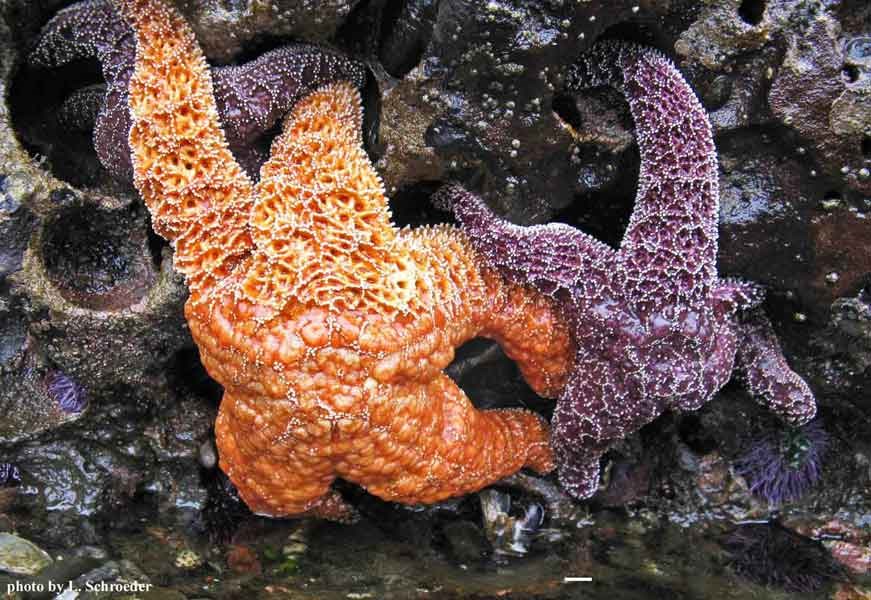Last updated: April 30, 2018
Article
No Clear Cause for Recent Sea Star Wasting Disease Found

© L. Schroeder
April 2018 - A new study has revealed no one cause of the disease, which hit populations of the keystone predator ochre sea star (Pisaster ochraceus) particularly hard in 2014 and 2015. The authors used data from 90 sites ranging from Alaska to southern California (including Golden Gate National Recreation Area and Point Reyes National Seashore rocky intertidal monitoring program sites) to try to determine what caused the outbreak.
While “unprecedented declines” were seen all along the sea star’s range, losses were much higher in southern areas than in the north. In general, more densely packed groups of animals may more easily spread diseases, but population density did not seem to be a factor. Warmer water is also sometimes a culprit in marine disease outbreaks, but no correlation to water temperature was found in this case. However, the authors note that warmer waters may have exacerbated the disease’s effects.
Ochre sea star populations may be beginning to recover, with those in the north coming back a bit more quickly than those in the south. However, because there is no one clear cause, this and future outbreaks remain both hard to predict and to manage. “Large-scale impacts of sea star wasting disease (SSWD) on intertidal sea stars and implications for recovery” is available in full on the PLOS ONE website.
